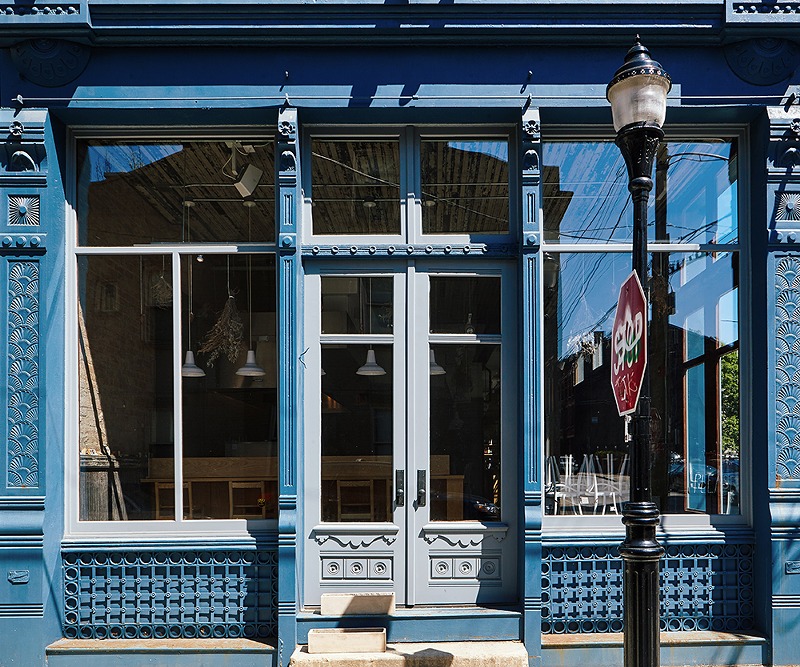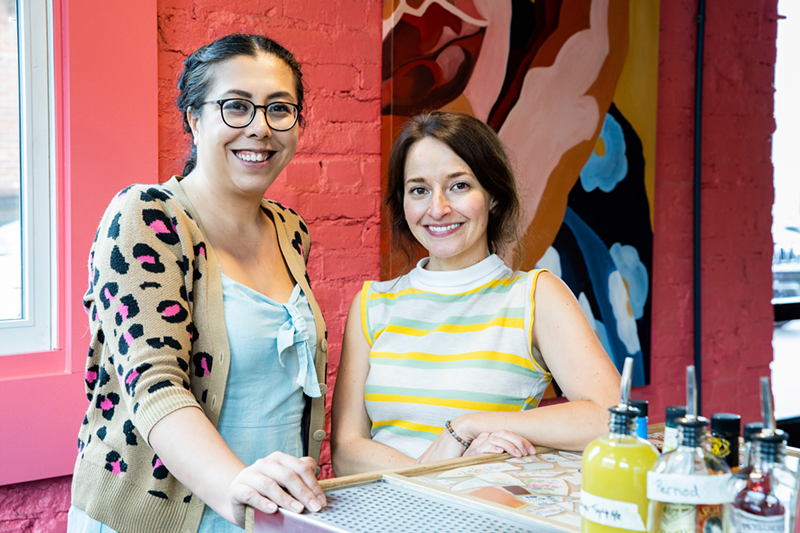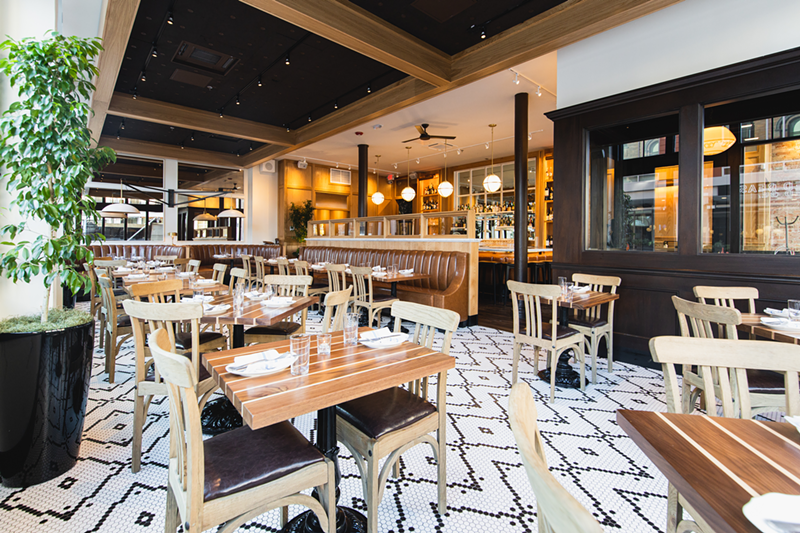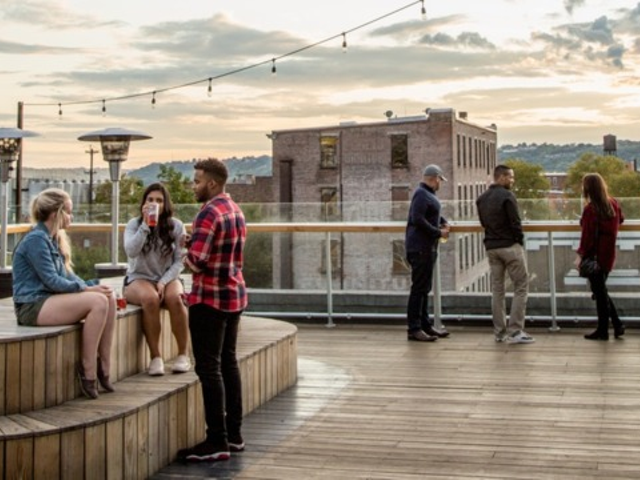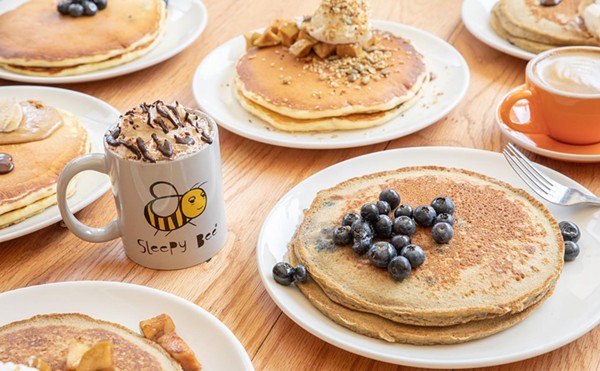The communal experience of dining, post-pandemic, is going to look different. We’re no longer going to be rubbing elbows with strangers at a crowded bar, or standing 10 deep in hopes of being called next on an hour-long waitlist. Those days are gone — for now. So what will the restaurants and bars of the near-future look like?
“It’s not even just about reopening and opening back up with whatever safety and health precautions there (are),” says Ryan Santos, owner and chef of Please in Over-the-Rhine. “It’s, ‘What sort of restaurant are we when we come back?’ I don’t think we’re the same restaurant, with the same menu and the same format that we were before.”
Please, a close-quartered restaurant on the corner of Clay and E. 14th streets, thrives on intimacy. It’s baked into its operational model, with an expansive tasting menu, 30-person capacity, tiny back bar and a lean staff of 12. In this new era of social distancing, though, coupled with Santos’ Crohn’s disease (which puts him in the high-risk category), that layout will have to shift.
“I think with so much uncertainty, and the likelihood that we’re going to be taking out 50 percent of our tables inside, you probably can’t have such an expanded menu as we did before,” he says. “Most of the dining we do already is tasting-menu focused, so to abandon that is very scary, especially after spending the last three-and-a-half years building that format for ourselves and being successful in it.”
Santos has applied for a permit to allow some outside seating to mitigate the loss of tables inside.
HomeMaker’s Bar in Over-the-Rhine is practically new — their one-year anniversary is this June. They started strong, but predicting bar-going post-pandemic is just as uncertain as dining out. In the interim, co-founders and owners Julia Petiprin and Catherine Manabat quickly moved to offering carry-out of their light bites bar menu, and offering alcohol as well when Governor Mike DeWine announced booze sales to-go were allowed in April.
“We had a feeling things were going to change, so we started to think about what we could do for carry-out before we even knew we were going to be shut down,” says Petiprin. “In our minds, we had a game plan.”
She and Manabat are the only employees currently working to move to that model. They’re taking it day by day, planning to hire some employees back to work alone on a project-needs basis in the coming weeks.
“We were trying to accommodate the neighborhood because we were noticing that a lot of our regulars weren’t coming as much, so we wanted to make sure we were set-up to do carry-out,” Manabat says. “We started small. Just having those seeds planted helped us make the big transition over. I would say we’re doing fine.”
“We’ve been working really hard to let people know that we’re here and we’re open and we’re doing things and that we’re there for them,” adds Petiprin. “And it is growing, which is good.”
But can it be sustained? And what after? An added bitter note for Please is the loss of momentum following Santos’ James Beard Award nomination earlier this year for Best Chef: Great Lakes. Santos was one of 20 semifinalists named in February.
“It was terrible,” he says. “We got named No. 1 restaurant in Cincinnati Magazine and a week later, I got the nomination for Best Chef from James Beard. That kind of press, it takes the three years we’ve been open to work hard and push to get those things, and we only got to see about three or four weeks of the benefit from that. Coming back, I don’t think that energy will be there anymore.”
Bars might have it worse when it comes to recapturing energy and the proverbial “vibe” of “going out.” To that end, at least, Petiprin and Manabat have found a novel (if short-term) solution.
“Friday nights we do a live Tip Your Bartender series (on Instagram), so we introduce different members of our team. And it’s just a way for us to hang out with our friends — like when people come into the bar and stop in,” Manabat says. “Engaging with the community is so important to us. We can’t do it in the traditional way, so we’re thinking of different ways we can do it. And it helps support our GoFundMe, 100 percent of which goes toward our staff.”
The financial losses are another consideration. Many restaurants turned to crowdfunding and other stop-gap funding. Please has a private dinner option available on their website, which will feature Santos cooking in the buyer’s home for up to 10 people. And while several restaurants moved swiftly to a take-out model to salvage some revenue, Santos chose not to.
“It just didn’t seem like the right pivot for us,” he says. “To actually make to-go successful, you have to be doing a pretty decent clip of volume to make it work, and we didn’t know that that was something that would happen if we pivoted. With so much of the future unanswered at that time, it didn’t seem like the right way to spend the reserves that we had.”
To support staff and pay bills, Santos applied for the Paycheck Protection Program, an emergency loan created by the U.S. Small Business Administration (as did each proprietor interviewed for this article. All three restaurants received PPP funding). The SBA will forgive loans if all employees are kept on the payroll for eight weeks and the money is used for rent, mortgage interest, payroll or utilities. But he found the cost might outweigh the benefits in the long run.
“Navigating that is really scary, to be honest,” Santos says. “It’s a blessing, and we’re very fortunate to have gotten in on the first round and gotten some money out of it, but the Treasury and SBA’s guidelines on it are vague, at best. We’re not open, and it’s still meant to be used if you’re not open to pay employees, but without some clearer guidelines, it feels really risky to use it, because what if after eight weeks, we did one thing wrong, we missed one of the little details on how it should be executed, that’s tens of thousands of dollars we have to pay back.”
Larger operations, like the Thunderdome Restaurant Group, also shuttered entirely, only recently moving to carry-out options. The entity includes Bakersfield, The Eagle, Pepp & Dolores, Krueger’s Tavern, Maplewood, Currito and CityBird. On April 27, Thunderdome announced Currito and CityBird would reopen for carry-out and delivery, offering their full menus. Pepp & Dolores reopened May 1 for carry-out and delivery, and the rest of the restaurants will open for carry-out over the next several weeks.
“Initially, we did carry-out for about a week,” says co-founder Joe Lanni. “It quickly became apparent that, for us, this wasn’t going to be a situation that was something we could maintain for a long, long period of time. Sales volumes just weren’t there. More importantly, the team members, myself included, were processing this information that there was a lot of fear surrounding the situation. ‘Am I going to get sick? Is this safe? Is it socially responsible to even be asking our team to do this, asking our customers to come here?’ There were no practices at that point.”
In the ensuing six weeks, Thunderdome regrouped, working with the Ohio Restaurant Association and National Restaurant Association for guidance. Lanni says they reopened not just to do carry-out business, but to turn their supply-chain back on and re-employ staff.
“(We wanted) to get the machine rolling again, with the hopes that being able to serve customers in the dining room is on the horizon, and we feel that it is,” Lanni says. “We also feel the safety factor has dramatically changed. We decided to get it cranked back up and get ready for when we can welcome guests back inside the restaurant.”
COVID-19 cases in Ohio totaled more than 18,000 at the end of April. On April 27, Governor Mike DeWine announced three key dates for reopening the state: May 1, some medical services that don’t require an overnight stay will resume; May 4, construction, manufacturing, distribution and general offices will reopen; and May 12, consumer, retail and some services will reopen, provided they can meet mandatory safety requirements. No provisions have yet been announced for restaurants (as of press time).
(UPDATE: During a May 7 press conference, Gov. DeWine announced outdoor dining can begin May 15 and indoor dining can begin May 21, as long as restaurants follow health and social distancing guidelines. These guidelines apply to bars that have tables or space to put tables as well.)
“Are people going to be comfortable coming out, even if we’re allowed to?” asks Santos. “We can probably afford to open up again, but probably only once. So if we open in August, and October we have to close down again for an unforeseeable amount of months, that’s when things start to get tough. If a second wave of closures comes down, that’s when things get a little scarier. It feels like such a vortex of ideas and then wrong answers, and then who knows? No one can see the future, so it’s hard to guess what this is really going to look like once it gets going.”

